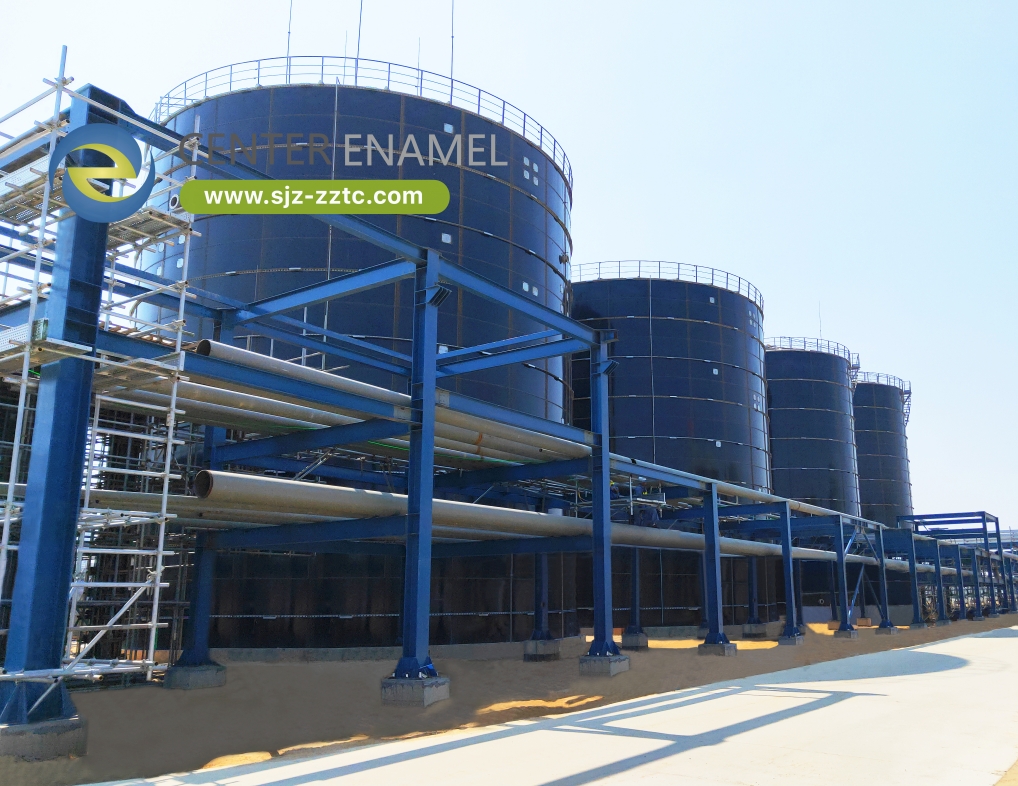Continuous Flow CSTR Reactors: Boosting Sludge Digestibility | Center Enamel

In the evolving landscape of wastewater treatment and renewable energy recovery, enhancing the digestibility of sludge is a critical challenge. Continuous flow Continuous Stirred Tank Reactors (CSTR) offer an advanced and efficient solution for improving the biodegradation of organic waste. At Center Enamel, our expertise in designing and manufacturing state-of-the-art CSTR systems has positioned us as a leader in optimizing sludge digestion processes, ultimately enhancing biogas production and reducing operational costs.
Continuous flow CSTR reactors are engineered to process sludge in a steady-state system where influent and effluent are continuously exchanged. Unlike batch systems, these reactors maintain constant mixing conditions, ensuring uniform distribution of substrates and microbial populations throughout the reactor volume. This continuous circulation not only stabilizes the microbial ecosystem but also maximizes the contact between the sludge and the active microorganisms responsible for biodegradation.
The key principle behind CSTR technology is the maintenance of an optimal environment for microbial activity. By sustaining ideal conditions for temperature, pH, and nutrient levels, these reactors promote rapid breakdown of complex organic compounds. The continuous flow design allows for the real-time adjustment of retention times, providing operators with the flexibility to fine-tune the process based on the specific characteristics of the incoming sludge.
Technical Advantages and Process Optimization
One of the foremost advantages of continuous flow CSTR reactors is their capacity for enhanced mixing. The continuous stirring action ensures that the entire reactor contents remain homogeneous, eliminating zones of stagnation that can hinder the digestion process. This uniformity is crucial for maintaining high microbial activity, which in turn boosts the overall rate of organic matter degradation.
Optimized retention time is another critical factor. In a well-designed CSTR, the hydraulic retention time is carefully controlled to allow sufficient residence of sludge within the reactor for complete microbial digestion. This controlled environment leads to higher conversion rates of organic waste into biogas, directly contributing to increased energy recovery from the process.
Moreover, continuous flow systems offer scalability, making them suitable for a wide range of applications—from small municipal facilities to large industrial wastewater treatment plants. Their design flexibility permits integration with pre-treatment and post-treatment processes, thereby enhancing overall plant performance. The ability to retrofit or scale up these systems without extensive reconfiguration further underscores their practicality and cost-effectiveness.
Impact on Sludge Digestibility and Biogas Production
Enhanced sludge digestibility is paramount to improving the efficiency of anaerobic digestion processes. In a continuous flow CSTR, the persistent mixing and controlled environmental conditions accelerate the breakdown of complex organic molecules. This not only leads to a higher rate of volatile solids reduction but also increases the yield of biogas—a renewable energy source primarily composed of methane.
The continuous flow design also minimizes the formation of inhibitory compounds that can accumulate in batch systems. By constantly diluting and removing these substances, the reactor maintains a conducive environment for microbial activity. The result is a more efficient conversion of organic matter, which translates into reduced sludge volume and improved quality of the digestate. This high-quality digestate can serve as an organic fertilizer, closing the nutrient loop and supporting sustainable agricultural practices.
Economic and Environmental Benefits
The adoption of continuous flow CSTR reactors brings significant economic advantages. Enhanced process efficiency and higher biogas yields result in lower operating costs and improved energy recovery, which are critical factors for the financial viability of wastewater treatment facilities. Additionally, reduced sludge volumes decrease disposal costs and mitigate environmental risks associated with waste handling.
From an environmental standpoint, more efficient sludge digestion directly contributes to the reduction of greenhouse gas emissions. By capturing and utilizing methane produced during anaerobic digestion, these reactors play a pivotal role in lowering the carbon footprint of wastewater treatment operations. Furthermore, improved biodegradation minimizes the release of untreated waste into the environment, thereby protecting local ecosystems and water resources.
Center Enamel’s Commitment to Engineering Excellence
At Center Enamel, we leverage decades of industry experience to deliver continuous flow CSTR reactor solutions that meet the highest standards of performance and reliability. Our systems are developed using advanced computational modeling and precision manufacturing techniques, ensuring that each reactor is tailored to the specific demands of modern wastewater treatment facilities.
Our engineering team works closely with clients to design reactors that are optimized for their unique operational requirements. Whether the objective is to boost biogas production, reduce sludge volume, or enhance overall process stability, our customized solutions are designed to deliver measurable improvements. Furthermore, our commitment to sustainability is reflected in every aspect of our design and manufacturing process, ensuring that our reactors not only perform efficiently but also contribute to long-term environmental stewardship.
Integration and Future Prospects
The integration of continuous flow CSTR reactors into existing wastewater treatment infrastructure is a strategic move for facilities aiming to enhance operational performance. Our systems are compatible with a variety of pre-treatment and post-treatment technologies, allowing for seamless incorporation into established processes. This flexibility ensures that upgrades can be implemented with minimal disruption, delivering immediate benefits in terms of both efficiency and environmental impact.
Looking ahead, advancements in microbial engineering and process control are poised to further enhance the performance of CSTR reactors. Ongoing research in the field of anaerobic digestion promises to unlock new opportunities for optimizing sludge digestibility and biogas production. Center Enamel remains at the forefront of these innovations, continually refining our reactor designs to meet the evolving needs of the wastewater treatment industry.
Center Enamel’s commitment to engineering excellence ensures that our CSTR reactor solutions are at the cutting edge of wastewater treatment technology, providing our clients with the tools they need to achieve sustainable operational performance. For wastewater treatment facilities seeking to improve efficiency and reduce environmental impact, Center Enamel’s continuous flow CSTR reactors offer a proven and reliable solution. To learn more about our advanced reactor systems and how they can be integrated into your operations, please contact Center Enamel.
